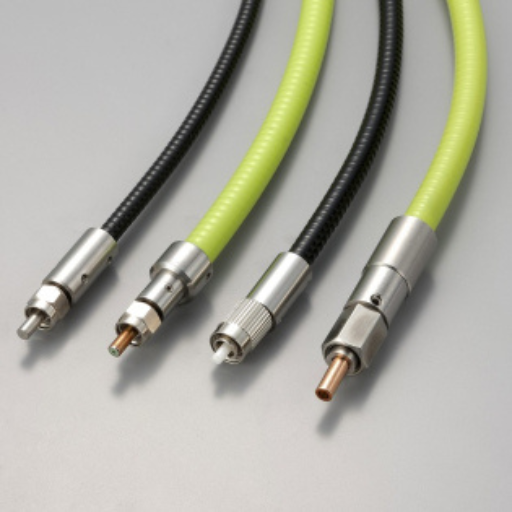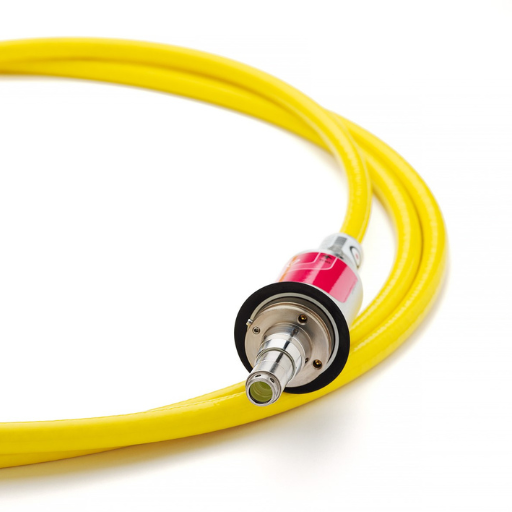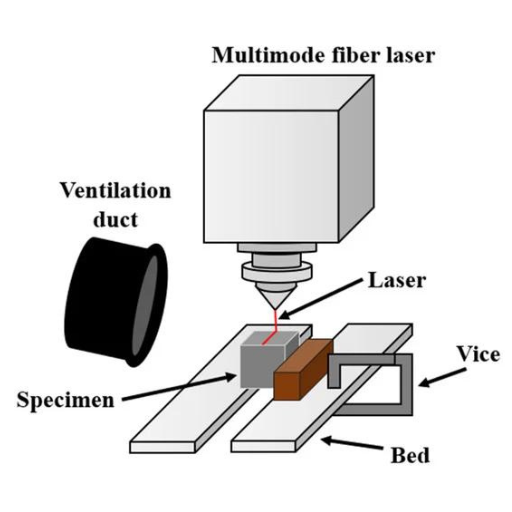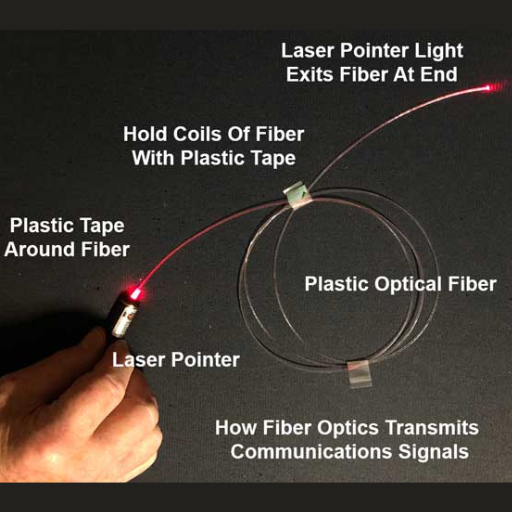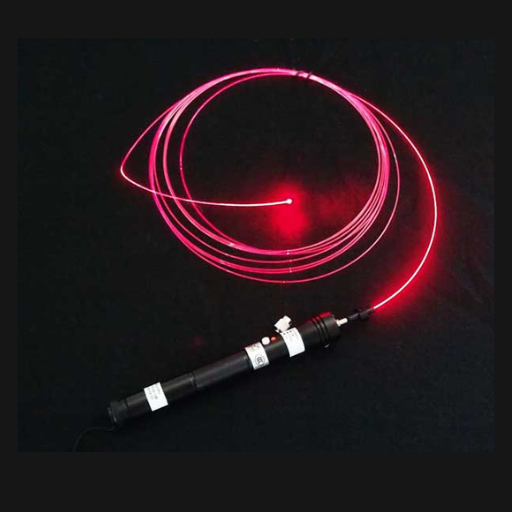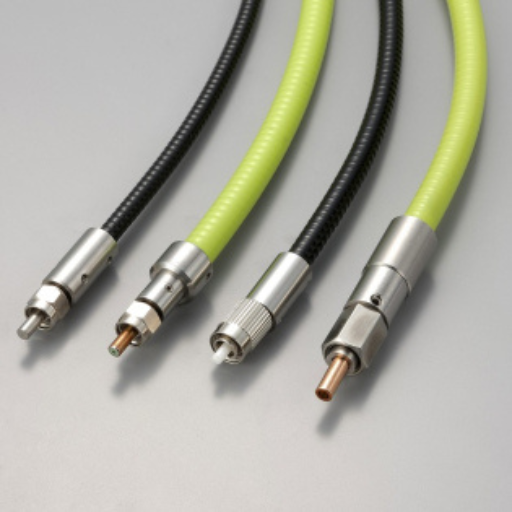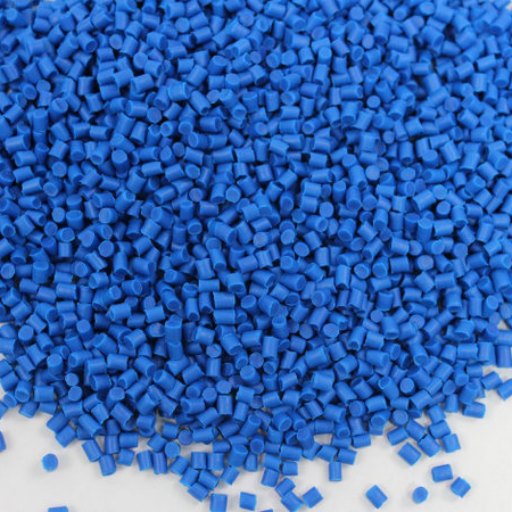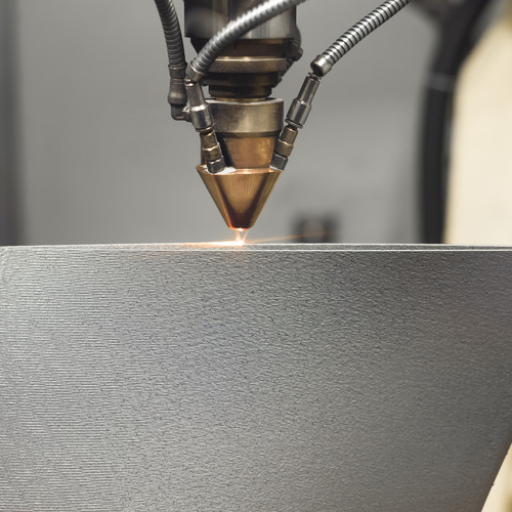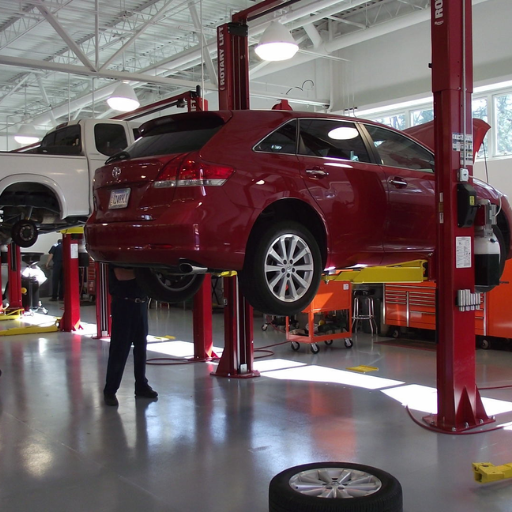Fiber optic laser cutting is an advanced technique used in CNC metal services that employs a focused laser beam to cut, etch, or engrave materials with extreme precision. This method utilises fiber optics to enhance the efficiency and accuracy of the laser cutting process, making it ideal for high-precision applications across various industries. Its advantages include faster cutting speeds, reduced maintenance requirements, and the ability to handle complex geometries with exceptional detail.
What Makes Fiber Laser Cutting Stand Out?
Fiber Laser Technology: Key Advantages
- High Cutting Speeds: This means productivity is higher, since fiber lasers cut faster than CO2 laser. They can be 2-3 times faster than the CO2 laser in cutting thin materials.
- Energy Efficiency: Fiber lasers consume less energy and are more electrically efficient, often converting up to 70% of input power into a laser beam.
- Low Maintenance Requirements: Reduced maintenance costs arise from fewer moving parts and no mirror realignments. This results in lower operating cost and increased uptime.
- Enhanced Precision: A beam quality of fiber lasers that allows cuts as fine as 0.1 mm makes it suitable for intricate designs and complex geometries.
- Material Versatility: Such materials as different metals including plastics and composites may be cut by fiber lasers (Ministry of Economy, Trade & Industry, 2012). They are highly effective with reflective aluminum, brass or copper.
- Long Operational Lifespan: Diode life in fibre lasers can exceed 100,000 hours thereby allowing long-term use without frequent replacement of components.
- Compact Design: These systems have a small footprint enabling them to be used in various industrial settings where space is limited.
These advantages make the market for metal cutting applications needing high accuracy and its versatility choose this particular technology as their top solution.
Understanding the Role of Optical Fiber in Laser Cutting
The operation of fiber laser is highly dependent on aspects such as beam quality efficiency and versatility that are largely controlled by fiber optics. In these systems optical fibers act like flexible media through which the source light reaches the cutting head without experiencing substantial losses. This flexibility is achieved using doped silica fibers capable of sustaining high power levels and resistant to reflective back lashing.
The core diameter for an optical fiber is one such crucial technical parameter with typical range being within 10 – 50 micrometers. It enables generation of high intensity tightly focused beams necessary for achieving fine precision and quality cuts associated with fiber lasers. Additionally, the numerical aperture (NA) of the fiber determines the focusing capability and depth of field, impacting the thickness of materials that can be effectively cut.
Beam quality (M² factor) is another major parameter usually less than 1.1 for high-quality fiber lasers ensuring close to perfect Gaussian beam profile. This high beam quality allows for faster cutting speeds and ability to handle intricate designs with ease. Fiber optics have also been found to have a high power conversion efficiency often in excess of 30%, which enhances overall energy efficiency of fiber laser systems.
In summary, superior performance in terms of energy efficiency, high beam quality and sharp focus characterizes optical fibers’ role in fiber laser cutting systems. These technical parameters justify the advantages of using fiber lasers for high-precision and versatile metal cutting applications.
Comparing Fiber Laser with CO2 Laser Technologies
There are some critical differences between fiber and CO2 lasers, which can be considered as their strengths and limitations. Efficiency of fiber lasers is generally above 30 percent whereas that of CO2 lasers is about 10-20%. This means that the operating cost for fiber laser technology will be lower than that of others. M² factors of below 1.1 characterize good beam quality in fiber lasers allowing more intricate designs which require sharper cuts. On the other hand, due to higher M² values, carbon dioxide laser produce less accurate results than other cutting methods and are better suited for non-metallic materials such as wood, acrylic, plastic.
Another difference is maintenance requirements. The robustness of fibre lasers, which have a solid-state design, makes them less demanding in terms of maintenance; on the other hand, carbon dioxide lasers call for frequent service largely because they rely upon delicate optics and mirrors: this involves cleaning issues just like anything else made from glass. Furthermore, fiber lasers do not suffer from back reflections when used to cut highly reflective metals like aluminium or copper while most CO2 laser struggle with these materials.
In conclusion therefore even though there still remains a small niche market for CO2 lasers in certain applications such as thick non metallic material processing; it is clear that fiber lasers offer higher efficiency levels and greater precision therefore they are more applicable in metal cutting applications.
Exploring the Types of Fiber Lasers Used in Cutting Machines
Differences Between Fiber and Fibre Lasers
The terms “fiber” and “fibre” lasers mean the same thing, the primary difference is between American English spelling and British English spelling. Both fiber (US) and fibre (UK) lasers work on the same principle and technology: using a doped optical fiber as an active medium. Therefore, there is no design or performance difference based on these words’ orthography.
Fiber lasers are commonly used in metal cutting and manufacturing industries because of their high efficiency, great beam quality, and low maintenance requirements. They can process diverse materials including reflective metals such as aluminum or copper. Such types of fiber lasers are more robust than others since they are basically solid-state devices.
In conclusion both “fiber” and “fibre” laser names represents the same technological advance that combines precision with efficiency.
The Impact of Laser Wavelength on Cutting Efficiency
Laser wavelength is one of the key factors that determine its cutting efficiency. In this regard, for example, fiber lasers normally operate at about 1 micron wavelength which have very good absorption by metals thus being efficient for a variety of metallic substrates. It also reduces energy losses for reflective materials like aluminium and copper hence high cut accuracies.
On the other hand CO2 laser operates at 10.6 microns wavelength which is not effective in cutting metals but becomes efficient when it comes to materials without metal content such as plastics, glasses or woods.. The long wavelengths employed by CO2 lasers ensure higher rates of absorption and thermal effects in non-metals than metals thus making them less suitable for use with metals compared to fiber ones.
Moreover, shorter wavelengths are accompanied by smaller spot sizes; leading to improvement in accuracy during cutting processes using laser beams. This feature makes fiber lasers preferred for fine-detail tasks as well as fast cutting motions common in metal fabrication.
How Different Types of Fiber Lasers Influence Laser Cutting
Specific applications as well as variations in power, beam quality and other factors make different types of fiber lasers play a significant role in cutting. For example, high-power fiber lasers are suitable for thicker materials with faster cuts. These lasers can penetrate metals deeper due to their increased output powers, thus reducing cutting time.
Beam quality often referred to as the mode of the laser determines how precise cut will be made. Single-mode fiber lasers have an almost perfect beam quality and therefore create extremely fine and detailed cuts that are particularly useful in medical device manufacturing or microelectronics requiring high accuracy levels.
Furthermore, multi-mode fiber lasers provide versatility by handling diverse cutting tasks. Thick and thin materials can be cut with these systems thereby making them popular in industries that require extensive kinds of machining processes.
Specialized fibers such as those with adjustable pulse modes enhance cutting further. Such lasers operate either continuously or pulsed thereby providing additional control over heat input while minimizing thermal damage to substrates. Consequently, these machines perform best on different substances and thicknesses indicating how the various types of fibre optics are tailored toward meeting specific industrial needs during breakdown procedures.
How Does Fiber Laser Technology Work?
From Doped Fiber to High-Power Laser Beam: Step-by-Step
- Fiber Doping: To begin, the gain medium is made that is usually a silica fiber containing rare earth elements such as ytterbium and erbium. The doped fibers are designed with specific properties that facilitate amplification of light.
- Pumping the Fiber: In this case, the doped fiber is exposed to high-intensity light emitted by semiconductor laser diodes. Generally, pump light falls in near-infrared region. For Ytterbium-doped fibres, wavelengths of pump light typically lies between 915 nm and 975 nm.
- Absorption and Excitation: On absorption of the pump light by the doped fiber, electrons within rare-earth atoms move up to higher energy levels. This process creates a basis for subsequent amplification of light.
- Stimulated Emission: As they return to their ground states excited electrons produce photons. These photons stimulate other excited electrons to emit more photons; thus it continues in this way as they continuously travel along the fibre’s core where it acts as an optical waveguide enhancing propagation along the fibre itself only that they are directed towards one direction only which help in strengthening our beam of light thus referring to it as a fiber amplifier or laser.
- Amplification: As such, this emitted light continues to be amplified while going through the doped fiber material. Essential parameters like gain determine power increase per unit length and are crucial for amplification purposes, e.g., typical gains can vary from 20 dB up to forty (40) depending on ‘fiber design type’ and ‘pump powers’ employed therein.
- Laser Forming Process: In order for feedback mechanisms such as mirrors or FBGs to generate coherent laser beams already described above are used; these devices allow a part of incident radiation wave back through gain medium thereby maintaining resonant cavity that sustains lasing.
- Beam Quality: High beam quality is important for precision applications. Beam quality is usually measured by the M^2 factor, where a value close to one means a more perfect beam. Single mode fibers have M^2 values near this ideal, making them suitable for fine and precise cuts.
- Output Coupling: Finally, the amplified light leaves fiber through an output coupler. Among other things such as pump power and fiber length, output power can be several kilowatts for high-power fiber lasers.
By learning each step from doped fiber to high-power laser beam, we understand how complicated it is and how different technical parameters have to be controlled accurately in order to achieve the best performance of fiber laser cutting technology.
The Role of Pump Light and Laser Diodes in Fiber Lasers
Pump light and laser diodes are indispensable parts of operation and efficiency of fiber lasers. The doping fibers with rare-earth ions (like ytterbium or erbium) are excited using pump light typically obtained from high-power diode lasers. These ions on excitation by the pump light release photons generated in form of energy which amplify the input signal beam through stimulated emission process.
Efficiency and performance of any given fibre laser system mainly depends on characteristics of pumping diodes including their wavelength, power output level as well as reliability indices within some limits provided by their manufacturers. For its part, high-power laser diodes offer an accurate and flexible pump source that ensures robust industrial performance. If properly selected and aligned with appropriate care, these elements will bring about enhanced stability for a wide range of cutting, welding or marking operations due to higher power outputs in combination with superior beam quality thus making this kind of lasers attractive candidates for use in various manufacturing sectors like automotive due to ‘soft’ thermal effects produced during processing procedures
Fiber Amplifiers and Laser Cavities: Boosting Laser Power
Furthermore, fiber amplifiers and laser cavities are very important in increasing the power and efficiency of fiber lasers. Fiber amplifiers are an example of such devices as Erbium-Doped Fiber Amplifiers (EDFAs) that serve signal amplification without having to go through electronic transformations therefore allowing for increased optical signal strength over long distances. They operate by stimulating light emission from doped fibers, thus making the laser output powerful.
In contrast, it is necessary to have laser cavities to create the laser beam itself. It is made up of a gain medium such as doped fiber and mirrors that form a resonant optical cavity. This ensures that there is feedback mechanism required for enhancing light through stimulated emission. The cavity design has direct impacts on the efficiency, quality of beam and stability of the laser being emitted. By tweaking the length, reflectivity and alignment of all elements within a laser cavity best performance metrics can be attained by high-power fiber lasers hence they find suitability in demanding industrial applications like accurate cutting or welding purposes.
Choosing the Right Laser Cutting Machine for Your Needs
Considerations to be made when selecting a fiber laser cutting machine
- Power Output: The power of the laser is very important because it controls the material that can be cut effectively by it. Machines with higher power can cut through thicker and more diversified materials, although they might come at a higher price. For you to decide which power level is suitable for your case, you should check what typical material thicknesses and types they will deal with.
- Cutting Speed and Precision: Efficiency and quality are determined by both the speed at which a machine can cut as well as its accuracy. Faster cutting speeds translate to improved productivity while greater precision means cleaner cuts requiring less finishing. One should look into such specifications as maximum cutting speed and tolerance levels of the desired machine.
- Build Quality and Durability: The design of these machines actually determines how reliable they are going to be in order for them last long. Look out for those machines that have been constructed using high-quality components in their making process. Additionally, safety measures like enclosed work areas or other protective panels may also reduce maintenance costs.
Through thorough examination of these considerations, businesses can acquire fiber laser cutting machines that are best suited for their needs and maximize their investment return.
The Importance of Laser Power and Machine Size in Cutting Applications
Therefore, a large number of factors such as laser power output capacity along with machine size influence the efficiency and capability of any given fibrous laser cutter. High-power lasers cut through thicker stronger materials thus increasing versatility whereas high powered lasers ensure faster processing times thereby boosting productivity. Conversely, smaller machines are beneficial for precision tasks and are suitable for less intensive applications, providing flexibility in space-constrained environments. By so doing, organizations optimize their operations by selecting appropriate tools based on material requirements among other things.
Understanding the Cost-Benefit Analysis of Fiber Laser Machines
In this analysis, one looks at both initial investments and long-term savings accruing from use of fiber lasers in production processes. Here are the main factors to consider:
- Initial Investment: Fiber laser machines may tend to cost slightly more at the beginning as compared to other cutting technologies out there. This will involve buying the machine, installation costs and any training needed for operators.
- Operational Efficiency: One of the reasons why fiber lasers are preferred so much is because they require little maintenance and have high efficiency. Such lasers consume less power, wear fewer parts and spend less time idling; therefore, overtime this means that production costs will go down.
- Productivity Gains: Basically, fiber laser machines have good cutting speeds as well as precision enhancing productivity levels. Activities that take longer can be done within a short period thereby saving on time or money used in labor and materials respectively.
- Material Versatility: A wide variety of materials including metals, plastics and composites can be cut by fiber lasers. The result is that you get more services to offer and even increase revenues.
- Lifecycle Costs: When evaluating these systems take into account their lifetime expenses such as repairs, maintenance or whether it can be upgraded.Mobile Lasers produce higher quality results while being cheaper over the long run since they last for long thus reducing replacements among other things.
By considering all these factors together businesses can make an informed decision weighing greater initial expenditure with improved operational efficiencies and productivity gains offered by fiber laser technology ultimately maximizing their return on investment.
Applications and Materials Suitable for Fiber Laser Cutting
Expanding the Versatility of Fiber Laser Cutting in Different Industries
Fiber laser cutting is an incredibly versatile technology, with applications spanning many industries. In automobile manufacturers it simplifies manufacturing processes by accurately cutting up components and making lightweight yet tough parts. Additionally, for aerospace sector to maintain safety standards and performance; hence high precision cutting of high-performance metals and composites is very significant. In addition, these fiber lasers are widely used in the electronics industry for precise cutting and engraving of fragile components without damaging them. This characteristic as well spreads to medical device manufacturing sectors which calls for extreme accuracy and cleanliness as well as jewellery field that depends on delicate cuts as well as intricate designs. Therefore, fiber laser technology has a wider range of material handling capabilities.
Identifying the Most Suitable Materials for Fiber Laser Cutting Processes
During my research on the best materials for use in fiber laser cutting processes I found out that they work superbly with a wide array of metals besides some non-metals.Fiber lasers provide precise cuts on stainless steel, carbon steel and aluminum amongst other compatible materials. According to different sites, copper and brass can be handled well by fiber lasers although extra carefulness should be exercised due to their highly reflective surfaces.Additionally, I learned that there are other non-metallic materials such as plastic or certain ceramics that can be cut using fiber lasers but this depends on the properties of those materials. While general consensus shows that fiber lasers are supreme at metal cutting they do have some potential when it comes to limited types of non-metals.
The Future of Fiber Laser Cutting: Trends and New Material Capabilities
Researching into future trends in fibre laser-cutting techniques and new material capabilites reveals to me several important developments.One major trend is increased integration of automation and smart technologies enhancing efficiencyand precision in cutting processess.Another advancement lies in higher powers available from modern day laser sources enabling the processing thicker sections ranging from advanced composites to the new alloys. There is also a growing emphasis on the environmental and economic advantages of fiber laser cutting, thanks to its energy efficiency and lower operating costs. Furthermore, by harnessing control software innovations, and system integration continues to increase flexibility and application area covered with respect to fibre laser cutting technologies hence making it indispensable in the wide range of industries. These developments point towards a bright future for fiber laser cutting as technology evolves and adapts to meet the needs of modern manufacturing processes.
Reference sources
- Baison – Fiber Lasers: The Ultimate Guide
- URL: baisonlaser.com
- Summary: This comprehensive guide from Baison provides an in-depth look into fiber laser systems, offering valuable insights into the technology behind fiber lasers. It covers the working principles, advantages, applications, and how to choose the right fiber laser machine for specific needs. The guide is particularly useful for those seeking detailed technical knowledge and practical advice on selecting and using fiber lasers in various industrial contexts.
- Armortex – A Brief Guide to Fiber Optic Laser Cutting
- URL: armortex.com
- Summary: This article by Armortex focuses on the precision cutting capabilities of fiber optic laser machines, specifically in the context of cutting metal materials. It highlights the efficiency and accuracy of these machines, making it a key resource for understanding the practical applications of fiber laser cutting in high-quality metal part production. The content is geared towards both industry professionals and those new to fiber laser technology.
- Kanyana Engineering – Fiber Laser Cutting: Everything You Need to Know
- URL: kanyanaengineering.com.au
- Summary: Kanyana Engineering’s guide delves into the advanced technology of fiber laser cutting, emphasizing the speed and precision it offers in metal fabrication. The article covers the operational aspects of fiber lasers, their benefits over traditional cutting methods, and specific use cases. It’s an excellent source for readers looking to understand the technical nuances and real-world applications of fiber laser cutting technology.
Frequently Asked Questions (FAQs)
Q: What is the meaning of fiber optic laser cutting and how does it work?
A: Fiber optic laser cutting refers to the use of a fiber laser, which is a kind of laser light, for precision cutting of materials. This results in high accuracy as well as efficiency due to direct transmission of the high power beam by the fibre optic glass cable to where it is needed. For CNC metal services, it is commonly used since it makes clean cuts with low kerf width.
Q: Why would one choose a fiber optic laser cutter instead of traditional methods?
A: The main benefits include enhanced productivity, more accurate cuts and quicker speeds. In addition to this fact, fiber optic laser cutters can also be used on other kinds of materials such as metals (aluminum), plastics and composites. Compared to conventional lasers and mechanical cutting systems; they are easier to maintain and consume less energy.
Q: Can fiber optic laser cutting do both laser marking and engraving?
A: Yes – you could even adapt fibre optics for use in marking or engraving lasers. Fiber lasers are versatile enough for use in creating fine detailed permanent marks on any material; hence they have opened manufacturing and designing opportunities.
Q: How do different types of laser affect the cutting process?
A: Different types of lasers such as solid state lasers, diode lasers as well as mode locked fibers produce various wavelengths that affect the cut quality along with power outputs. Material absorption rate, cut speed and edge quality are all influenced by this. The reason why there are so many high powered fibre lasers being used for industrial scale applications like this lies within their efficiency coupled with their ability to produce sharp edges.
Q: What safety measures should be in place when operating a fiber optic laser cutter?
A: Laser safety precautions must be taken seriously in order to avoid accidents. These include using protective goggles while operating the machine, providing appropriate interlocks for preventing mishaps around the laser, training users on how to use it safely and keeping the working area free from any flammable materials. Routine maintenance and inspections are also necessary to ensure safe operation of the laser system including its components such as the laser head, output laser.
Q: What materials can be cut with a fiber optic laser cutter?
A: Various materials, metals like steel, aluminum, brass and copper; plastics; composites ceramics can all be cut with a fiber optics laser. The efficiency of cutting will depend on both material characteristics and the power delivered by a laser beam.


